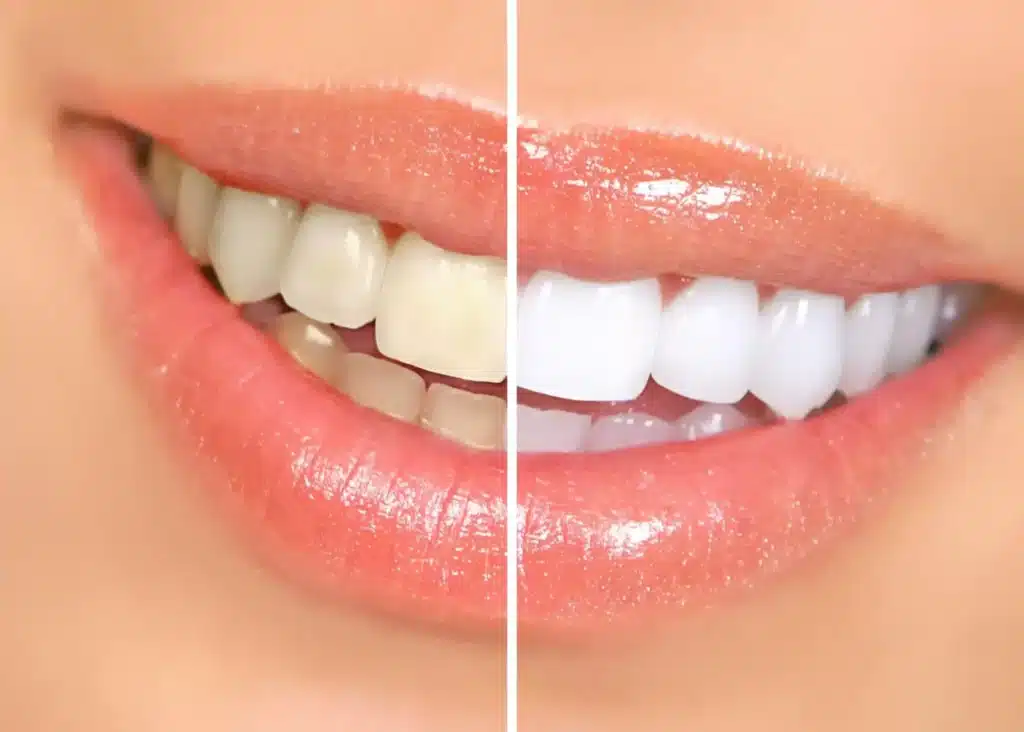The Ultimate Guide to Teeth Whitening: Methods, Benefits, and What to Expect

A bright, white smile is one of the most sought-after features in today’s world. Whether for professional settings, social media, or personal confidence, teeth whitening has become an increasingly popular cosmetic dental treatment. But with so many products and procedures available, understanding your options is essential. In this comprehensive guide, we’ll walk you through everything you need to know about teeth whitening—from causes of discoloration to professional treatments and at-home solutions.
What is Teeth Whitening?
Teeth whitening is a cosmetic dental procedure designed to lighten the color of your teeth and remove stains and discoloration. It’s one of the most requested treatments in cosmetic dentistry due to its effectiveness and quick results.
How Does Teeth Whitening Work?
Most whitening methods use peroxide-based bleaching agents (hydrogen peroxide or carbamide peroxide). These chemicals penetrate the porous enamel and break down the compounds that cause stains, resulting in a lighter tooth color.
Why Do Teeth Lose Their Natural Whiteness?
Our teeth aren’t immune to time, habits, or daily life. Over the years, their natural brightness can fade, leaving behind shades of yellow, gray, or brown. The reasons vary—some are right on the surface, like coffee stains or tobacco use, while others develop from within due to age, certain medications, or past dental trauma. Understanding what’s behind the discoloration helps set realistic expectations for whitening and helps you choose the most effective method.
The Science Behind Teeth Whitening
Whitening isn’t just a cosmetic trend—it’s based on real chemistry. Most modern whitening treatments rely on bleaching agents like hydrogen peroxide or carbamide peroxide. These substances break down stain molecules, lightening the overall color of your teeth. While surface stains are more easily lifted, deeper discoloration can take more time and stronger solutions to improve. And while results vary from person to person, the basic goal remains the same: to bring out the brightest version of your natural smile.
Choosing the Right Whitening Method
There’s no single approach that works for everyone. Some people go for a quick, professional treatment at their dentist’s office, hoping for instant results. Others prefer a more gradual at-home solution, such as trays or whitening strips. For those who want to avoid chemicals altogether, natural remedies may feel more comfortable—even if they tend to work more slowly and sometimes less effectively. What matters most is choosing an option that aligns with your oral health, lifestyle, and expectations.
What Happens During a Whitening Appointment?
If you opt for a professional whitening session, you’ll usually begin with a dental evaluation. Your dentist will make sure your teeth and gums are healthy enough for treatment. After a quick cleaning, they’ll apply a bleaching gel to your teeth and possibly use a light or laser to enhance the effect. The process typically takes under an hour, and results are often noticeable immediately. It’s a safe and efficient way to refresh your smile under expert care.
Keeping Your Smile Bright After Teeth Whitening
Maintaining your results isn’t just about avoiding coffee or red wine—it’s about forming smart habits. Brushing regularly with a whitening toothpaste, flossing daily, and staying hydrated can help reduce the buildup of new stains. Visiting your dentist for routine cleanings is also key. If needed, occasional touch-ups using whitening trays or strips can keep your teeth looking their best for longer. Whitening is only the first step—preserving the glow takes consistency.
Understanding the Possible Side Effects
Like most cosmetic treatments, whitening comes with a few potential side effects. The most common one is temporary tooth sensitivity, especially during the first few days after treatment. Some people also experience mild gum irritation if the whitening gel touches the soft tissue. These reactions usually go away quickly and can often be managed by switching to a toothpaste designed for sensitive teeth. When used properly, whitening is very safe—but like anything, it’s best done in moderation.
Can You Whiten Teeth with Fillings or Crowns?
Whitening treatments only affect natural tooth enamel. If you have dental restorations like crowns, veneers, or fillings, they’ll stay the same color even after bleaching. That means if your natural teeth become noticeably whiter, the difference between them and your restorations might stand out. In some cases, you may want to replace old restorations to better match your new shade. A dentist can help you make that call based on your unique smile.
When Whitening Might Not Be a Good Idea
While whitening is safe for many people, it’s not for everyone. Pregnant or breastfeeding women are usually advised to wait. If you have untreated cavities, gum disease, or very sensitive teeth, it’s important to address those issues first. And if you’re under 16, your teeth may still be developing, making whitening too harsh at that stage. The best approach is to speak with your dentist before starting any treatment to make sure it’s right for you.
Clearing Up Common Whitening Myths
There’s a lot of misinformation out there about whitening. Some believe it damages enamel, but when used correctly, it doesn’t. Others think it can work on all types of teeth—but restorations and deep internal stains may not respond. And while natural remedies seem gentle, many of them—like lemon juice or charcoal—can be too abrasive or acidic, doing more harm than good. It’s always worth checking facts before trying a new whitening trick.
Whitening with Confidence: Final Thoughts
A whiter smile can make you feel more confident, refreshed, and even more youthful. Whether you’re prepping for a big event or simply want to brighten up your everyday look, whitening can help. The key is choosing the right method for your needs, following it carefully, and taking care of your teeth afterward. Remember: whitening enhances what’s already there—it’s not about perfection, but about feeling good every time you smile.
